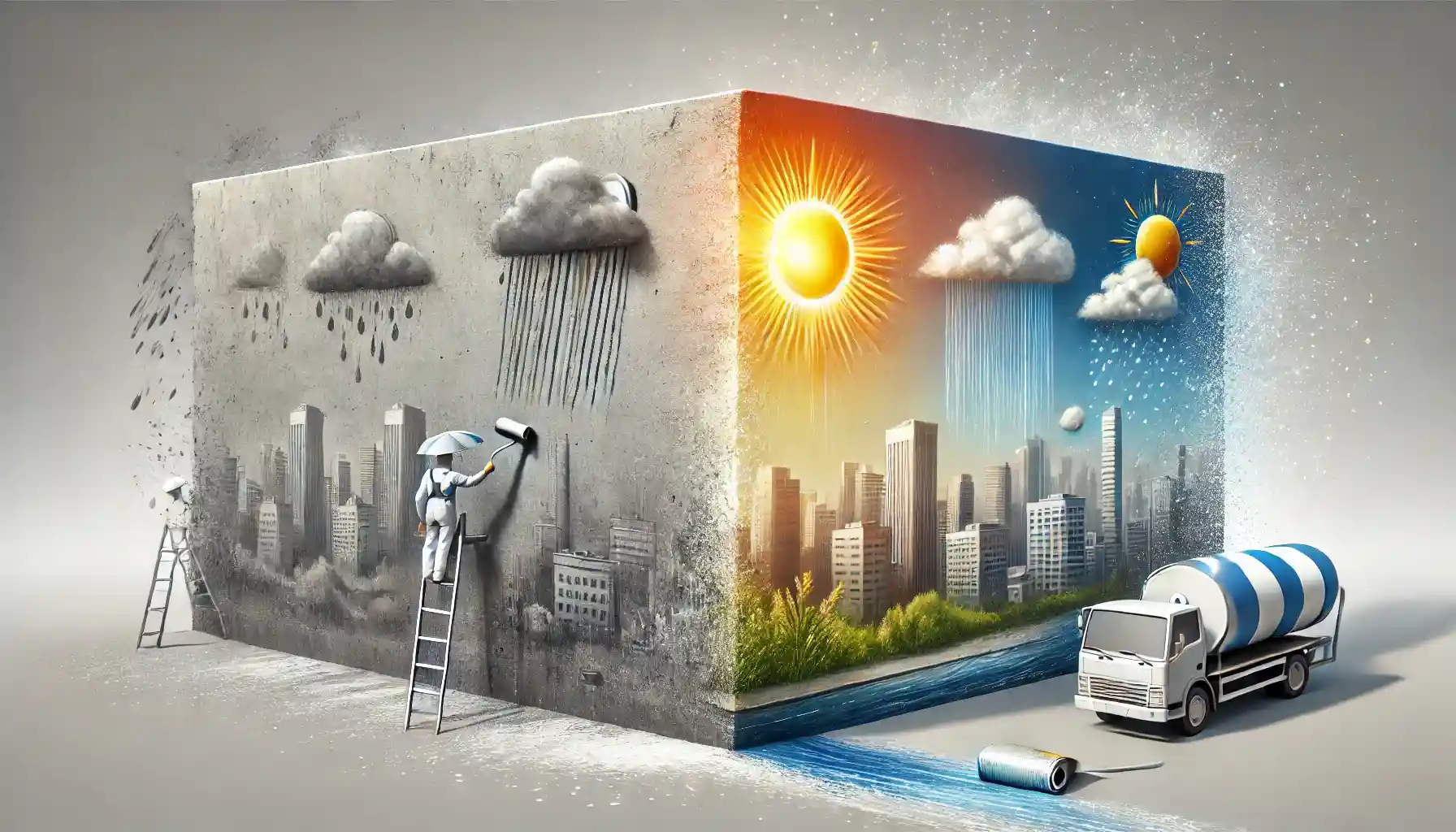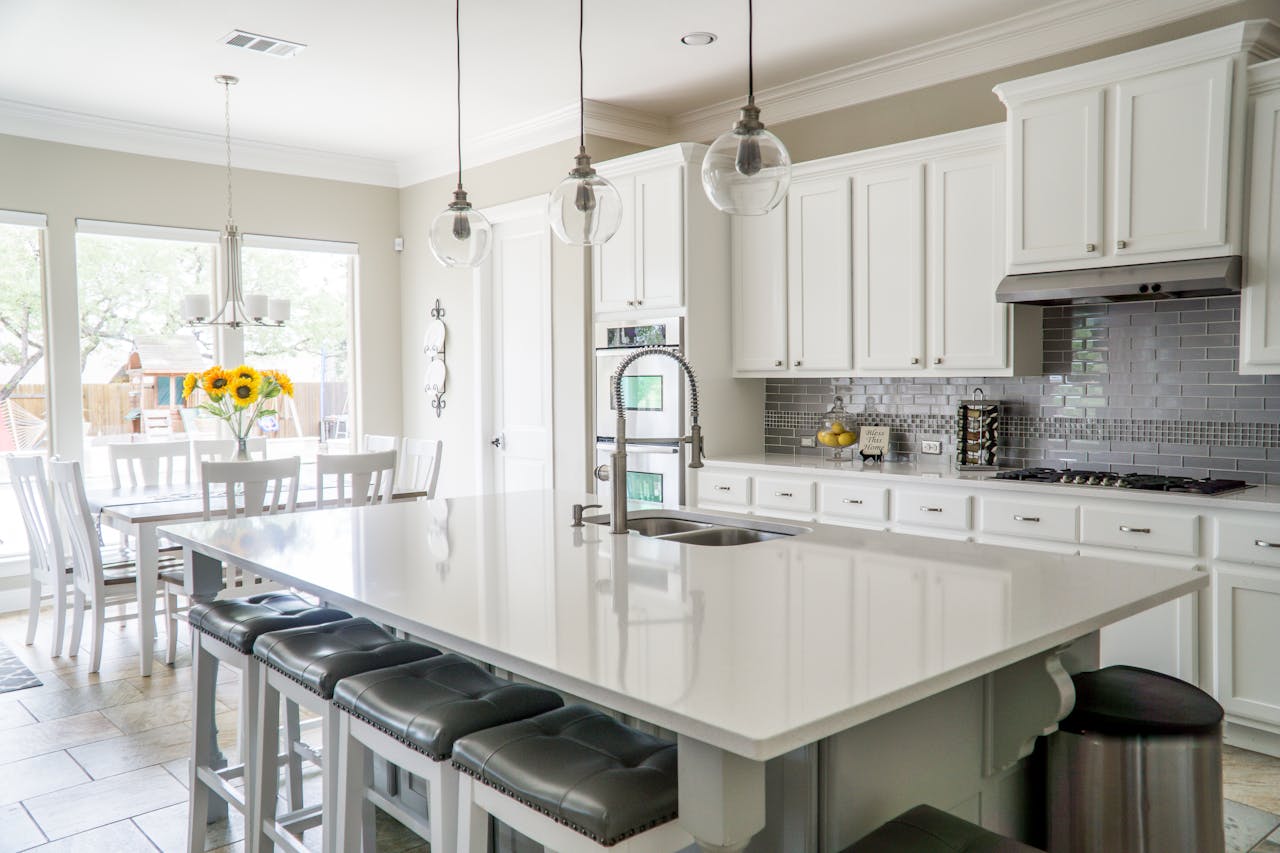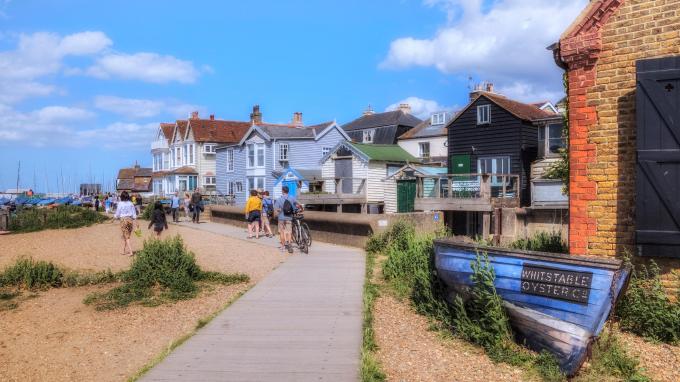
Paint for concrete walls will adhere better or worse depending on the weather. You’re ready to make a bright art piece out of your dull gray wall.
Picture yourself with a pencil outside on a nice day. But quickly, the weather can make that scene look like the worst picture ever.
As the weather changes, so does the way paint works and how well it sticks to things. These tips will help you paint your walls better and for longer.
This way, your house will always look clean and nice. Talk about how the weather changes the way you work!
How Weather Affects Paint for Concrete Walls
Temperature and wetness levels are two of the most important things that can affect how well you paint concrete walls. The weather has a big impact on both how the paint looks and how long it lasts. It affects everything from how long it takes to dry to how well it sticks to the surface.
Rain and Moisture
Rain is one of the biggest problems artists have to deal with because it can ruin a wall that has just been painted. Droplets of water hitting wet paint make the color run or streak, which makes the finish uneven. Weather that is wet can also be a problem when painting, even if it doesn’t rain.
When there is a lot of wetness in the air, paint takes longer to dry because it moves more slowly. This extra time to dry can make the bond between the paint and the concrete surface weaker.
It’s important to check the weather report before starting your job to avoid these problems. If it’s going to rain, you should wait to paint until the weather gets better. If you live in an area with high humidity all the time, you might want to use a dryer or wait until it’s drier before painting.
Heat and Sunlight
For painting jobs outside, sunshine is necessary, but too much heat and direct sunlight can damage paint. Paint that dries too fast can crack and peel because of the extreme heat. Colors can also fade over time because of UV rays from the sun.
Plan your painting project for times of the day when it’s cooler and there is less strong sunlight instead. You can also use paints that are made to resist UV rays and keep the color from fading.
Wind
When painting walls, wind may not seem like a big deal, but it can really mess things up. When you paint your wall, a gust of wind can blow dust and other things onto it, making the finish bumpy. It can also dry paint out too fast, which can cause it to crack and peel.
If you can’t help but work outside in the wind, try covering your walls with drop cloths or blankets. You can also paint by putting yourself in a way that stops the wind.
Best Practices for Painting Concrete Walls
Let’s talk about some good ways to paint concrete walls now that we’ve talked about how the weather can affect your painting job. These painting contractor tips will help make sure that things go well.
Prepare the Surface
Before you paint, you should really clean and get the wall ready. The paint might not stick as well if the area is dirty or dusty. This can make the paint peel or stick in different spots over time.
Clean the walls with the right cleaner or, for bigger jobs, a power washer. For tough dirt, scrub them. Check the surface for flaws or damage that needs to be fixed before you to get home painting solutions.
Make sure the wall is always dry before you paint or prime it. When it rains, paint or primer that doesn’t stick well can leave lines.
These extra steps will help you get a smooth, even finish. It will save you time and work in the long run because it will look better and last longer.
Use High-Quality Paint
If you spend money on good paint, the finish will last longer. It might cost more at first, but in the long run it will save you time and money.
Additionally, good paint usually covers better, so you don’t need as many coats. In the end, picking quality over price will save you time and money by giving your space a more lively look.
Check Weather Conditions
Before you start a job, you should always check the weather report. If it’s going to rain or be very hot or cold, it’s better to wait until the weather is better.
In the long run, being ready can save you time and money. Have a backup plan ready in case the weather changes at the last minute!
Use Appropriate Tools
It is very important to use the right tools when painting concrete walls. For bigger areas, a roller or washer might work best. For smaller areas, a brush might be better.
To get the best results, make sure the area is cleaned and primed properly before painting. Using good paint will also make the look and longevity better.
Paint in Sections
Split the wall up into smaller pieces instead of trying to paint it all at once. This will keep the finish from drying unevenly and help you avoid drying problems.
Spend some time on each part to make sure you cover everything. Remember to use good paint for the best effects!
When it comes to hiring professionals for your painting project, it’s essential to choose professional painting services that understand the nuances of weather conditions affecting paint application. For a stress-free experience and expert results, consider Fresh Coat Painters Marble Falls to help ensure your painting project is not only beautifully executed but also durable against the elements.
Weather-Proof Your Masterpiece: The Ultimate Guide to Paint for Concrete Walls
The weather has a big effect on how long paint for concrete walls lasts and how it looks. You can make sure your work stays in good shape for years to come by being careful and following best practices.
Check the weather before you start painting, use good paint, and be aware of how different things could affect your job. If you remember these tips, you’ll have beautiful walls that won’t go away in no time!
Does this article help you? Explore our website to find more helpful and fun stories that could help you.
Read more on WCCO






